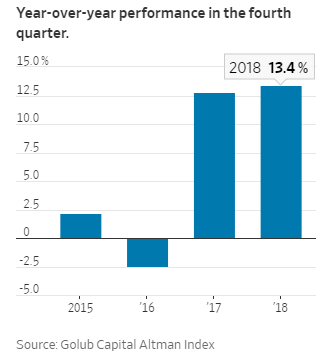According to a report released by Golub Capital last week, “U.S. middle-market private companies enjoyed the strongest earnings growth in years, propelled by high demand for products and services.” Those positive numbers have piqued the interest of private capital markets participants struggling to maintain consistency and order amidst geopolitical tumult.

The Executive Network Dashboard
Creating meaningful gains requires expert systems and highly talented people, especially given the emphasis being place on operational value creation (versus simple financial engineering). Some firms even start with the executive because of their unique skill set or expertise, and build or buy a company based on him/her. That’s why private equity firms and management teams alike need to keep their executive network connections close.
While larger firms may have a dedicated person on staff to track and maintain relationships with top operating talent, the majority of firms we speak to view “executive network maintenance” as a shared responsibility. Given that, most firms leverage “Executive Network” dashboards like the one below to monitor the availability of various operators for advisory, hands-on, Board-level supervision, expert opinion, or other work.
These dashboards become particularly useful as deals progress. For add-on and platform deals alike, it’s incredibly valuable for private equity firms and management teams to have visibility on which operating professionals will be available to assist with key due diligence concerns, industry-specific competitor analysis, or integration once the deal has closed.

Many firms, when tapping into their executive network, value the ability to zero-in on industry specialists, such as healthcare tech experts.
Maintaining strong visibility on your firm’s talent network will not only help you mitigate risk, but it will help your firm think of new ways to respond to the increased demand for products and services, and ultimately propel strong earnings further into the year.
The Risk Analysis Dashboard
Nothing de-rails a quarter like an internal issue that takes your eyes off the ball. While risk mitigation is often not the main focus of senior leadership or even of operating partners, it’s incredibly important that visibility on ongoing issues be maintained.
Creating a “risk” or “issues” dashboard will help your organization’s leaders monitor the progress made on any given problem, and what deals or business opportunities that problem could affect. We recommend leveraging certain unique tags for risks and issues such as priority level (low, medium, high) and details (which turn into searchable, free-form notes).
If you’re keen to keep your corporate growth story strong, this type of reporting should be central to your organizational structure. Users can receive notifications when an issue is logged for a deal that they own, and management can receive notifications every time the status changes (for example, from “work in progress” to “resolved”). No matter the status, all risk and issues will still be stored in your CRM, and can be pulled into reports or turned into institutional knowledge.

While the executive team may not be in the weeds of every issue, it’s important that they stay abreast of anything that will put performance at risk.
When performance is strong (like it was in Q4 2018), it’s important that private equity firms and management teams think critically about what’s needed to sustain that growth. Luckily, there are internal tools that can help. These two dashboards are just a few simple ways to help increase visibility into the “make or break” factors that keep companies growing: talent and risk.
Interested in learning more about leveraging DealCloud for internal organization and monitoring? Talk to our team today!
